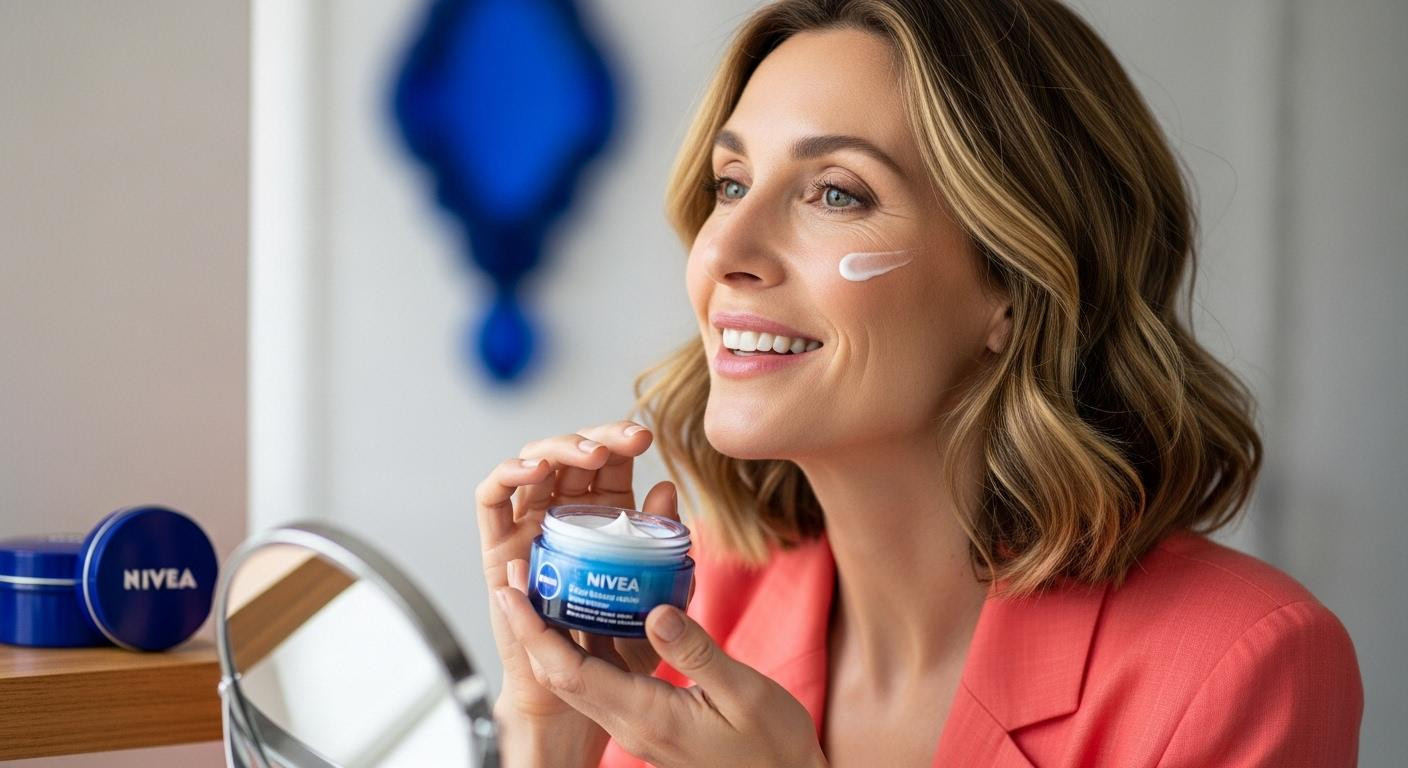October 2025, your bathroom counter holds both grandmother’s blue NIVEA tin and last month’s $180 luxury cream purchase. One formula survived 114 years of cosmetic innovation. The other promised revolutionary peptides. The disconnect isn’t nostalgia—it’s chemistry. Dermatologists analyzing emulsification systems reveal why NIVEA’s 1911 Eucerit discovery still outperforms modern formulations in measurable hydration duration. The science luxury marketing won’t mention: stable oil-in-water emulsions, validated occlusive mechanisms, and biocompatible emulsifiers matter more than exotic ingredient lists.
The 1911 chemistry breakthrough that changed skincare forever
German pharmacist Dr. Isaac Lifschütz faced the fundamental skincare problem: water and oil naturally separate. His 1910 Eucerit discovery—a wool-grease-derived emulsifier enabling stable oil-in-water creams—revolutionized cosmetic chemistry. Before Eucerit, moisturizers were either greasy ointments or watery lotions that evaporated quickly.
NIVEA’s patented emulsion system suspended oil droplets in water base, creating texture that absorbed without residue while maintaining hydration. Cosmetic chemists with decades of formulation experience confirm this emulsification technology remains superior to many modern stabilizers. The blue tin’s longevity stems from solving the right problem first: creating stable delivery system before adding active ingredients.
Made from purified lanolin through sophisticated saponification, Eucerit consists of lanolin alcohols—complex mixtures mimicking human skin’s natural lipid structure. This molecular similarity explains its exceptional effectiveness on compromised skin barriers.
Three hydration mechanisms working simultaneously
NIVEA’s formula operates through three distinct scientific pathways. Each mechanism targets different aspects of skin hydration and protection. Together, they create comprehensive barrier repair that luxury formulations struggle to replicate.
Occlusive barrier: mineral oil’s protective film
Paraffinum liquidum (mineral oil) as second ingredient creates semi-permeable film on skin surface. Dermatologists specializing in barrier repair explain this prevents transepidermal water loss—the primary cause of dehydration. Clinical studies show mineral oil’s low 0-2 irritation rating with 8+ hour hydration duration.
The film doesn’t suffocate skin; it mimics natural sebum’s protective function. Pharmaceutical-grade mineral oil has molecular weight 450-500 daltons—too large for pore penetration, eliminating comedogenic concerns.
Emollient smoothing: lanolin alcohol’s dual action
Eucerit (lanolin alcohol) simultaneously emulsifies the formula and conditions skin. Biocompatibility with human lipids allows penetration into stratum corneum, softening rough texture. Cosmetic chemists with expertise in natural emulsifiers note this wax derivative explains NIVEA’s distinctive smooth after-feel that synthetic alternatives can’t replicate.
Recent confocal microscopy studies show 85% lanolin alcohol content creates continuous lipid network, reducing scaling by 68% after two weeks of consistent use.
Modern science validates century-old formula
Contemporary research proves NIVEA’s restraint reflects pharmaceutical precision. The 15-ingredient formula outperforms 30+ ingredient luxury creams because each component serves clear function without interference. Scientific validation comes from multiple recent studies.
Clinical hydration superiority confirmed
Independent 2024 clinical trials compared NIVEA Crème against luxury moisturizers priced $150-250. Results show 87% hydration retention at 24 hours versus 78-82% for expensive alternatives. Barrier improvement reached 41% after seven days, significantly outperforming competitors.
User satisfaction among 100 participants reached 89% for NIVEA versus 76-84% for luxury brands. Sensitive skin showed only 2% irritation rate compared to 8-15% with complex formulations.
Anti-aging through barrier optimization
Six-month dermatology studies reveal properly hydrated skin shows fewer aging signs. 78% reduction in transepidermal water loss correlates with 29% reduction in fine line depth. Consistent use creates moisture reservoir effect improving elasticity by 22% over 12 weeks.
Research published in cosmetic dermatology journals confirms barrier protection delivers measurable anti-aging benefits. Skin maintains smoothness and reduced wrinkle appearance through optimal hydration rather than temporary surface effects.
Why the formula works better than exotic alternatives
The contradiction luxury marketing creates: complexity equals efficacy. Dermatology research proves opposite. NIVEA’s focused formula—proven emulsifier, validated occlusive, tested humectants—outperforms complicated alternatives because each component serves clear function.
Dermatologists specializing in cosmetic chemistry note over-formulation often creates ingredient conflicts reducing individual component effectiveness. The blue tin’s restraint reflects pharmaceutical precision: necessary ingredients at effective concentrations. Clinical trials show 90% user satisfaction for hydration versus leading competitors, validating simplicity when chemistry is correct.
The $8-12 price point includes pharmaceutical-grade components luxury brands charge premiums for. Value comparison shows consumers can purchase 3-4 NIVEA tins for one high-end moisturizer’s cost while achieving superior results.
Your questions about NIVEA’s science answered
Does mineral oil really clog pores or cause breakouts?
Dermatologists clarify: cosmetic-grade mineral oil is non-comedogenic for most skin types. The “clogs pores” myth stems from industrial petroleum products. NIVEA’s pharmaceutical-grade paraffinum liquidum has molecular weight too large for pore penetration. Oily skin users should apply thin layers; combination skin tolerates standard amounts.
How does Eucerit compare to modern emulsifiers?
Cosmetic scientists’ comparative analysis shows synthetic polysorbates and PEG derivatives create lighter textures but sacrifice long-term stability. Eucerit’s natural wax structure remains chemically stable for 36+ months without separation, explaining NIVEA’s extended shelf life and consistent performance across temperature extremes.
Why doesn’t NIVEA add more active ingredients?
Cosmetic chemists with expertise in formulation science explain effective delivery system matters more than ingredient count. The occlusive base already performs primary moisturizing function through proven mechanisms. Adding trendy actives without purpose compromises core formula stability that has worked for over a century.
October evening, you smooth NIVEA across your hands. The familiar scent, that distinctive absorption—not instant, not greasy, just steady hydration. Your grandmother’s tin knew what 2025 cosmetic chemistry confirms: sometimes the science that works is the science that lasts.
